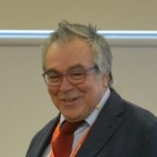Dielectric Photonic Devices & Systems beyond Visible II - Merging Optics and Microwave
A special issue of Applied Sciences (ISSN 2076-3417). This special issue belongs to the section "Optics and Lasers".
Deadline for manuscript submissions: 20 May 2024 | Viewed by 3009
Special Issue Editors
Interests: fiber optics; long period grating (LPG) fiber devices; rare-earth doped fiber laser; microwave photonics; microwave devices
Special Issues, Collections and Topics in MDPI journals
Interests: integrated optics; photonic crystals; plasmonics; graphene-based microwave and optical devices; nonlinear optics; microwave photonics
Special Issues, Collections and Topics in MDPI journals
Interests: glass photonics; properties, structure and processing of glasses, crystals and film for optical applications and photonics; integrated optics; transparent glass ceramics; confined structures including photonic crystals, waveguides, microcavities, and microresonators
Special Issues, Collections and Topics in MDPI journals
Special Issue Information
Dear Colleagues,
The recent technological advances in the field of dielectric photonics, integrated optics, and optical fiber-based systems have paved the way for novel application areas based on the employment of optical beams. Photonics, integrated optics, and optical fiber-based systems constitute nowadays a feasible technological platform, successfully exploited in 5G networks, Internet of Things (IoT), Industry 4.0, Telemedicine, Environment Monitoring, Precision Agriculture. In this context, innovative hybrid solutions, integrating optics with antennas and systems based on micro- and millimetre wave propagation are strongly spreading.
Optical beam propagation/processing allows application in biomedicine, via the interaction of light with biological tissues, such as in optical diagnostic and therapy; communication by exploiting, in addition to the conventional fiber optic systems, microwave photonics and radio-over-fiber techniques; material processing, via high brilliance and high power optical sources; sensing with the development of novel LiDAR (Light Detection and Ranging o Laser Imaging Detection and Ranging) systems, novel SERS (Surface Enhanced Raman Spectroscopy) substrates, microstructured optical fiber and photonic crystal based sensors; aerospace application via the developing of high performance devices including optical gyroscopes, medium infrared Mid-IR tracking systems; optical homeland security and surveillance. These and many others promising applications are a straightforward consequence of the optical technology progress. As an example, a number of activated materials have been ad-hoc synthesized for the construction of novel optical sources, in both conventional and exotic wavelength ranges, by embedding rare earth ions in different host materials (glass oxides, fluorides, chalcogenides, glass ceramics, crystalline, organics etc.) or by inclusion of rare earth ions in molecular complexes. In addition, novel optical materials as graphene promise novel applications through innovative optical circuitries. The availability of low cost commercial tunable optical sources as quantum cascade lasers and the fabrication of resonant microcavities and microstructured fibers, such as the terahertz sources, allow novel chemical and biological sensing set-ups. Further improvement of sensor performances can be obtained by covering dielectric structures with thin metal layer exploiting plasmon propagation, wavelength resonances and diffraction gratings. Moreover, surprising applications have been originated from the progresses in the field of optical amplification, fluorescent probes, luminescent labels, optical converters, switches, detectors, etc.
One of the most intriguing aspects of the recent applied research is the progressive merging of the aforesaid optical technology with microwave and antenna solutions, for both obtaining access points and complementary physical mechanisms, as expected by the unifying electromagnetic theory, leading to similar engineering approaches.
This Special Issue collects both original contributions and review papers on the optical devices and systems beyond visible, covering an extremely wide area of interest which ranges from telecommunication to optical remote sensing and earth atmosphere monitoring, from medical diagnosis and therapy to material processing, and from aerospace to security. The blending between the technological platforms microwaves/antennas with integrated/fiber optics falls within the Special Issue topics, following the trend of several emerging applications in which these areas are often indistinguishable.
Dr. Francesco Prudenzano
Prof. Dr. Antonella D’Orazio
Dr. Maurizio Ferrari
Guest Editors
Manuscript Submission Information
Manuscripts should be submitted online at www.mdpi.com by registering and logging in to this website. Once you are registered, click here to go to the submission form. Manuscripts can be submitted until the deadline. All submissions that pass pre-check are peer-reviewed. Accepted papers will be published continuously in the journal (as soon as accepted) and will be listed together on the special issue website. Research articles, review articles as well as short communications are invited. For planned papers, a title and short abstract (about 100 words) can be sent to the Editorial Office for announcement on this website.
Submitted manuscripts should not have been published previously, nor be under consideration for publication elsewhere (except conference proceedings papers). All manuscripts are thoroughly refereed through a single-blind peer-review process. A guide for authors and other relevant information for submission of manuscripts is available on the Instructions for Authors page. Applied Sciences is an international peer-reviewed open access semimonthly journal published by MDPI.
Please visit the Instructions for Authors page before submitting a manuscript. The Article Processing Charge (APC) for publication in this open access journal is 2400 CHF (Swiss Francs). Submitted papers should be well formatted and use good English. Authors may use MDPI's English editing service prior to publication or during author revisions.
Keywords
- novel dielectric materials for NIR, Mid-IR, THz devices
- rare earth based materials and devices
- NIR and Mid-IR coherent light sources
- supercontinuum generation
- PBG devices, Metallo-dielectric photonic crystals, plasmonics
- microresonators, integrated optics
- components and system for biomedicine, interaction of light with biological tissues, optical diagnostic and therapy
- microwave photonics applications and Radio-over-fibre transmission
- optical 5G
- optical antennas
- THz and millimetre wave components, systems and applications
- integration of microwave and optics
- aerospace photonics







